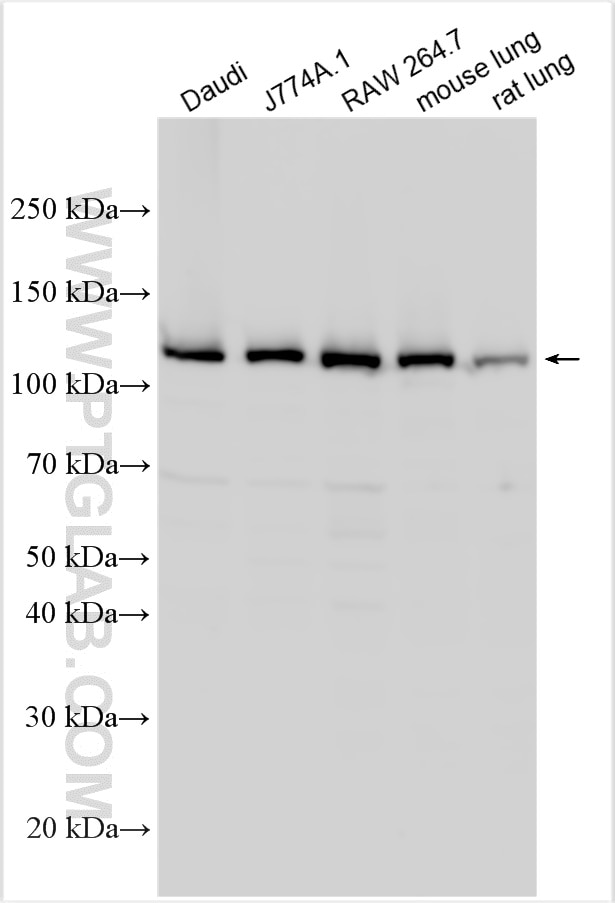Tested Applications
| Positive WB detected in | Daudi cells, J774A.1 cells, RAW 264.7 cells, mouse lung tissue, rat lung tissue |
Recommended dilution
| Application | Dilution |
|---|---|
| Western Blot (WB) | WB : 1:500-1:2000 |
| It is recommended that this reagent should be titrated in each testing system to obtain optimal results. | |
| Sample-dependent, Check data in validation data gallery. | |
Published Applications
| WB | See 1 publications below |
Product Information
27284-1-AP targets JAK1 in WB, ELISA applications and shows reactivity with human, mouse, rat samples.
| Tested Reactivity | human, mouse, rat |
| Cited Reactivity | human |
| Host / Isotype | Rabbit / IgG |
| Class | Polyclonal |
| Type | Antibody |
| Immunogen | JAK1 fusion protein Ag25579 Predict reactive species |
| Full Name | Janus kinase 1 (a protein tyrosine kinase) |
| Calculated Molecular Weight | 1154 aa, 133 kDa |
| Observed Molecular Weight | 125-133 kDa |
| GenBank Accession Number | BC132729 |
| Gene Symbol | JAK1 |
| Gene ID (NCBI) | 3716 |
| Conjugate | Unconjugated |
| Form | Liquid |
| Purification Method | Antigen affinity purification |
| UNIPROT ID | P23458 |
| Storage Buffer | PBS with 0.02% sodium azide and 50% glycerol, pH 7.3. |
| Storage Conditions | Store at -20°C. Stable for one year after shipment. Aliquoting is unnecessary for -20oC storage. 20ul sizes contain 0.1% BSA. |
Background Information
Janus kinase 1(JAK1), is a member of a class of protein-tyrosine kinases (PTK) characterized by the presence of a second phosphotransferase-related domain immediately N-terminal to the PTK domain. JAK1 is essential for signaling for certain type I and type II cytokines. JAK1 plays a critical role in initiating responses to multiple major cytokine receptor families. Expression of JAK1 in cancer cells enables individual cells to contract, potentially allowing them to escape their tumor and metastasize to other parts of the body.
Protocols
| Product Specific Protocols | |
|---|---|
| WB protocol for JAK1 antibody 27284-1-AP | Download protocol |
| Standard Protocols | |
|---|---|
| Click here to view our Standard Protocols |



